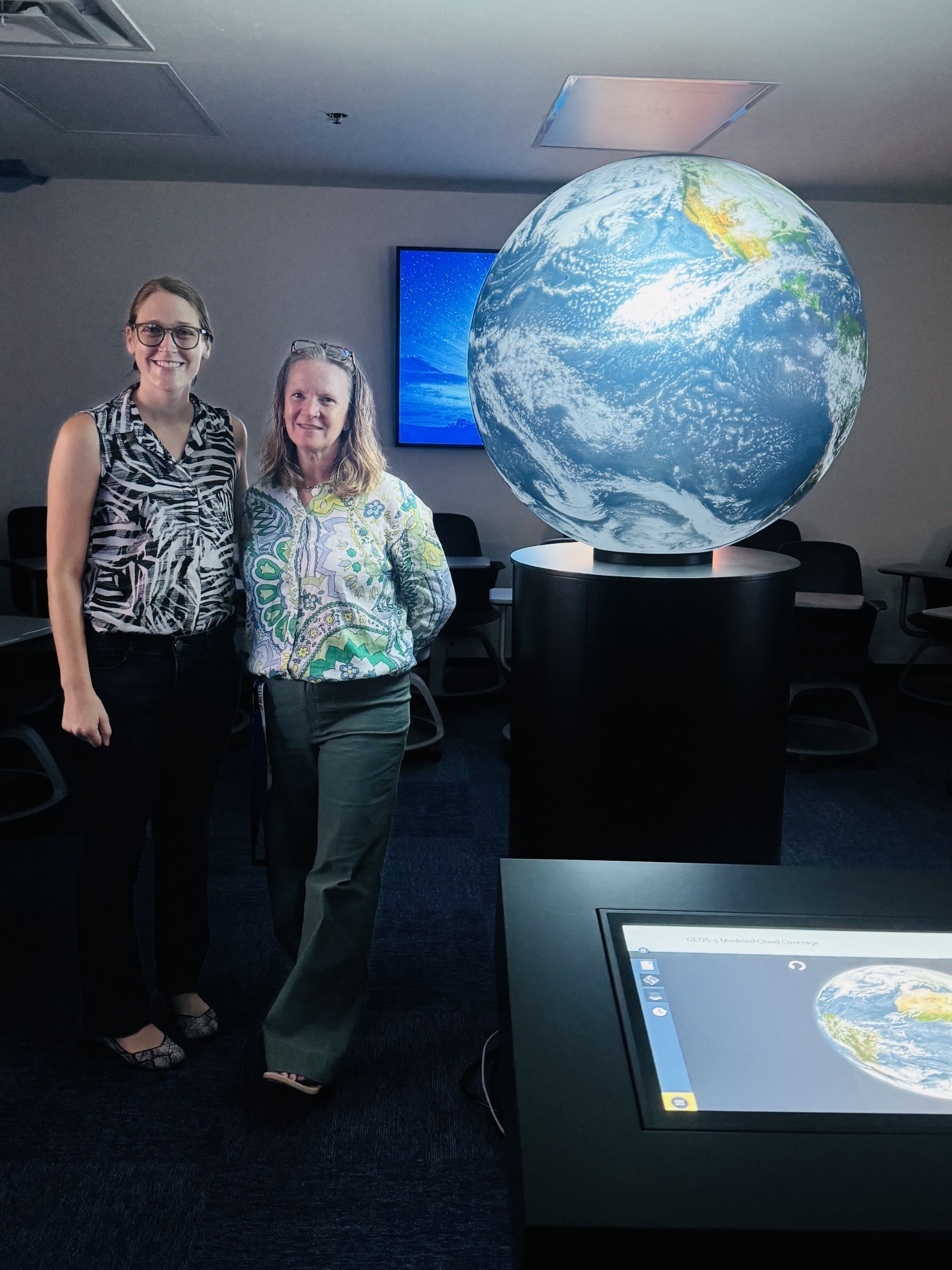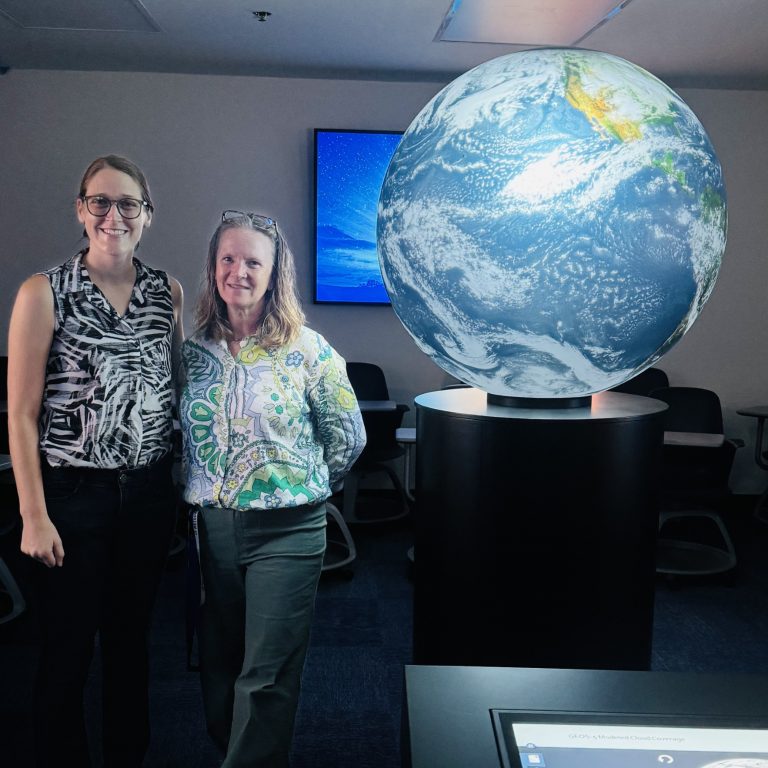The University of Florida has unveiled its latest investment in immersive learning technology with the installation of OmniGlobe, a state-of-the-art, 3D spherical display that brings real-time global data to life. Housed in a newly outfitted classroom in Turlington Hall, this new tool is redefining the university’s approach to immersive education and data visualization in the classroom.
The idea to bring this technology to UF was spearheaded by Jane Southworth, Ph.D., chair of the Department of Geography and the project was funded by the university’s Student Technology Fee Grant Program.
“The OmniGlobe is a pioneering technology at UF that redefines the educational experience,” said Southworth. “This is a dynamic leap forward in how we teach geography, earth science and atmospheric systems through immersive, hands-on visualization.”
 Photo courtesy of Jane Southworth.
Photo courtesy of Jane Southworth.
The 32-inch diameter sphere displays real-time environmental and planetary datasets, from weather systems and climate models to tectonic movement and human migration patterns.
The surrounding classroom has been outfitted with flexible furniture, adaptive lighting and a 360-degree layout to support learning, group presentations and technology-integrated instruction.
Bradley Harwood, IT project manager, co-sponsor and lead on the project, emphasized the globe’s adaptability and long-term potential. “What’s truly remarkable about the OmniGlobe is that it will visualize virtually any dataset we feed it, whether it is satellite imagery, climate models or populations trends,” Harwood said.
“It has great potential for our meteorology and climatology courses in particular,” said Gabriela Hamerlinck, Ph.D., an associate instructional professor of geography. Hamerlinck plans to incorporate the technology in her own medical geography and global health curriculum to show patterns of disease spread. “It will be a powerful took for students to see those patterns evolving in real-time, rather than on a static map or having the patterns simply described.”
The OmniGlobe will initially be integrated into undergraduate and graduate courses within geography but will eventually be available for interdisciplinary collaborations across campus.
“The OmniGlobe brings global data to life, helping students grasp complex concepts through rich, visual storytelling,” said Southworth. “From coding visualizations to leading group presentations, students will not just learn from OmniGlobe, but they’ll help shape what it knows.”
